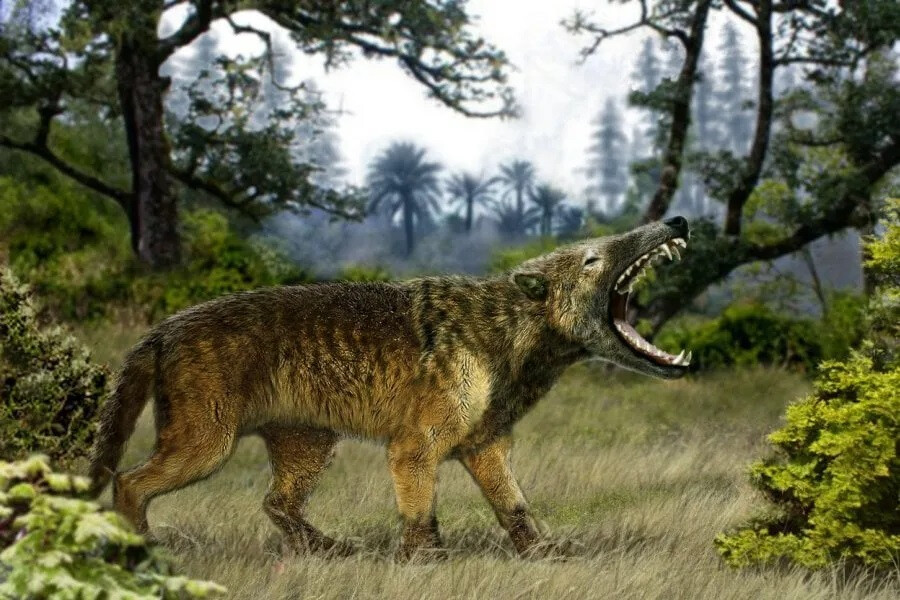
Baku, Azerbaijan – An international team of paleontologists has shed new light on the distribution and ecological role of one of the Late Miocene's most formidable predators, the colossal, hyena-like Dinocrocuta gigantea (often referred to as a "prehistoric hyena"). Researchers from Russia, China, and Azerbaijan have officially documented the species' presence in the Caucasus region, specifically within Azerbaijan, filling a significant gap in the understanding of its habitat and Eurasian migratory routes. The findings, published in the specialized journal Palaeoworld, challenge previous notions about this giant carnivore's lifestyle, confirming its status as a proficient hunter rather than a specialized scavenger.
Filling the Paleontological Map
The remarkable discovery stems from the study of jaw fragments unearthed at the Late Miocene site of Eldari in Azerbaijan. This area has yielded the first definitive evidence of Dinocrocuta in the Caucasus, connecting the geographically disparate fossil records previously known only from Southern Europe and Northern China.
"Our work is the first to describe Dinocrocuta hyenas from the Caucasus region," explained Russian paleontologist Daniyar Khantemirov, a specialist at the Ural Federal University. "Previous findings of this species had been described in Southern Europe or Northern China. Our discovery fills a blank space in our understanding of the habitat of Dinocrocuta, one of the main predators of the Miocene fauna," a geological epoch spanning from approximately 23 to five million years ago.
The identification of Dinocrocuta gigantea in Eldari lends strong support to the hypothesis that the Caucasus region served as a critical migratory corridor for mammals during the Late Miocene, influencing the movement of fauna across Eurasia.
A Beast of Unmatched Power
Dinocrocuta gigantea was a terrifying creature. Though technically a member of the extinct family Percrocutidae and not a true hyena (Hyaenidae), it occupied a very similar ecological niche. The largest species of its kind, adult individuals were giants among Miocene carnivores, with some estimates suggesting they could reach a body mass of up to 400 kilograms (approximately 880 pounds). This immense size rivals or even exceeds that of today's largest extant carnivores; for context, a modern Amur tiger typically weighs around 320 kilograms, and an average polar bear weighs about 450 kilograms.
Their immense, dome-shaped skulls and powerful, bone-crushing jaws were adapted for immense bite forces, a feature that has historically led to their mischaracterization as mere scavengers.
Hunter, Not Just Scavenger
The prevalent image of Dinocrocuta gigantea as a pure scavenger, stealing kills from smaller carnivores, is being revised by modern paleontological understanding—much like the contemporary view of spotted hyenas. Current research increasingly indicates that modern hyenas, particularly spotted hyenas (Crocuta crocuta), are highly successful, consummate predators, with scavenging being an opportunistic rather than a primary mode of feeding. This is rooted in the simple fact that fresh, live prey offers a more reliable food source than unpredictable carrion.
Following this ecological logic, it is highly probable that Dinocrocuta gigantea actively hunted the majority of its own food. During its reign, it would have been capable of preying on the giant herbivores of the Hipparion fauna, a diverse assemblage of mammals characteristic of the Miocene. Likely prey included the formidable, extinct tusked rhinoceros Chilotherium, whose massive body mass (some species up to 2.5 tons) and powerful build would have required an exceptionally large and strong predator to subdue. Fossil evidence, including bite marks on Chilotherium skulls, supports this active hunting behavior.
For at least a million years, these 'terrible hyenas' were arguably more dangerous predators than the contemporary saber-toothed cats and other large felines they competed with, dominating the Eurasian landscape. One question remains unanswered, however: did this apex predator hunt in solitary fashion, or did it operate in coordinated clans, similar to the complex social structures seen in modern hyenas? The answers may still be hidden in the Caucasian sediments.
[Copyright (c) Global Economic Times. All Rights Reserved.]




























